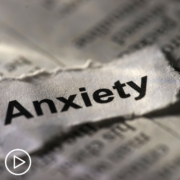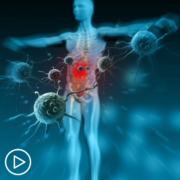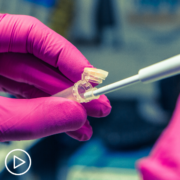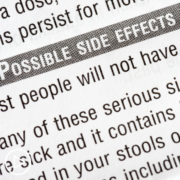Managing CLL Symptoms and Treatment Side Effects
Managing CLL Symptoms and Treatment Side Effects from Patient Empowerment Network on Vimeo.
Chronic lymphocytic leukemia (CLL) expert Dr. Seema Bhat reviews common CLL symptoms and treatment side effects and approaches for managing them. Dr. Bhat stresses the importance of sharing any issues they may be having with their healthcare teams.
Seema Bhat, MD is a hematologist at The Ohio State University Comprehensive Cancer Center – The James. Learn more about Dr. Bhat.
Related Resources:

|

|

|
Transcript:
Katherine:
Can you please talk about common side effects of CLL – which, of course, we’ve covered already, but both the ones from the disease itself and then ones related to treatment, and what can be done about these?
Dr. Bhat:
So, disease-related side effects, or we call them disease-related symptoms, include fatigue as a common symptom. Unintentional weight loss can happen. Fevers, chills, or drenching night sweats can happen. We call them, “B symptoms.” Spleen can enlarge, and the enlargement can cause belly pain or feeling of fullness quickly after a meal since spleen is close to our stomach, and as it enlarges, it limits the space stomach can take up in the belly. Lymph nodes can enlarge and can get uncomfortable. So, if any of these symptoms happen, then we have to treat the CLL, and once we start treating the CLL these symptoms should go away.
As far as treatment-related side effects are concerned, for example, BTK inhibitors are associated with a certain set of side effects. For example, patients can have muscle cramping, muscle pain, joint pain. Patients can have diarrhea. Some of the side effects that we worry about is change in heart rhythm, for example, atrial fibrillation. We talked about that, or increased risk of bleeding.
Those are some of the side effects we worry about, and if those were to develop, then, of course – for example, a patient has atrial fibrillation, and if it’s symptomatic, we hold the medication. We take care of the atrial fibrillation, usually in collaboration with cardiologists, and once that’s under control, then we have to decide what to do with the treatment. If the atrial fibrillation is under control, we can re-initiate the treatment, or we can go to one of the next-generation BTK inhibitors – the acalabrutinib (Calquence), the pirtobrutinib (LOXO-305), which have less of those side effects.
Bleeding tends to be a concern, but anything that reduces the risk of bleeding like other medications, aspirin, clopidogrel (Plavix), other blood thinners, we can avoid them, monitor these patients very closely for any of these side effects, so that’s critical. With venetoclax, it’s usually very well-controlled. It’s the initial part of treatment that tends to be a little bit intensive because of the specific side effect called, “tumor lysis syndrome,” which means that the drug works very quickly, and cells die off quickly, they can release stuff in the blood, and things can collect in the blood.
Uric acid can go up, electrolytes can be up, any number can go up. So, we are aware of this side effect, and we actually pre-emptively have things in place that can prevent this from happening, or if it happens, we manage it right away. For example, venetoclax has a specific dose initiation. For example, it’s called, “dose ramp-up.” We start it at a lower dose, 20 milligrams, for one week. Escalate it to 50 the next week, 100 the third week, 200 fourth week, and 400 the last week, which is the standard dose. They continue on 400 from there onward.
And even with the slow dose escalation, in the early couple of weeks, we monitor them very closely. Once we initiate a dose, we bring them back to the clinic to recheck their blood work to see if there are any changes. If any changes have happened, we hydrate them, initiate medication for their tumor lysis syndrome.
If the risk of tumor lysis is very high, then we monitor then admit them to the hospital. Otherwise, long-term side effects of venetoclax, what we have noticed mostly is gastritis, most side effects – mostly diarrhea. But that’s usually well-controlled. We can manage it well with supportive care.










